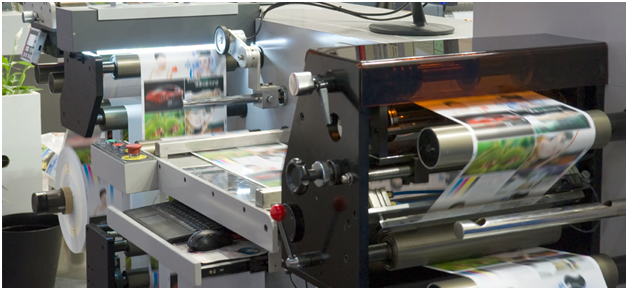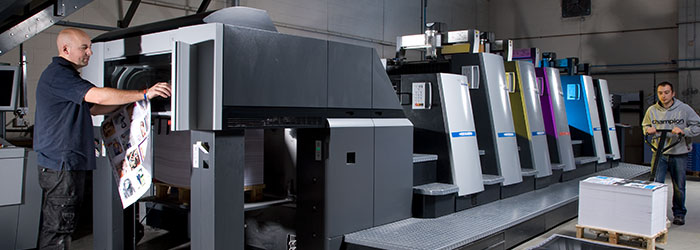Top-Tier litho printing Services for Professional Results
Top-Tier litho printing Services for Professional Results
Blog Article
A Comprehensive Guide to Understanding Litho Printing Methods
The world of litho printing, a method stemming from the late 18th century, is a fascinating mix of background, scientific research, art and advancement. This extensive overview will certainly unwind the complexities of this printing method, from the structure of litho inks to the obstacles faced in contemporary applications. As we venture right into the ins and outs of lithography, the relevance of automation and sustainability in guaranteeing its future significance comes to be increasingly clear. Remain with us as we trip into the fascinating world of litho printing.
The Historical Evolution of Litho Printing
The historic trajectory of litho printing, a crucial advancement in the realm of communication, is a fascinating tale of human ingenuity. Birthed in the late 18th century by Alois Senefelder, this method was at first an affordable approach of publishing staged jobs. Lithography, originated from the Greek words for 'rock' and 'to compose', made use of a smooth rock surface to transfer images onto paper. The procedure advanced with the development of the rotating press, which greatly increased productivity (litho printing). In the 20th century, the technology of countered lithography reinvented the sector, permitting automation of top notch prints. Each phase of litho printing's development showcases humanity's unrelenting search of effectiveness and top quality in visual communication.
Decoding the Scientific Research Behind Litho Printing Inks
Moving on in the expedition of litho printing techniques, the emphasis currently changes to the scientific research behind litho printing inks. The composition of these inks, their drying process, and color mixing techniques form the backbone of this intricate art type. Comprehending these elements is important to understanding the craft and achieving the preferred print outcomes.
Structure of Litho Inks
In lithographic printing, the fundamental role of litho inks can not be overemphasized. The composition of litho inks differs depending upon its objective, yet generally, they contain 2 main components - vehicles and pigments. Pigments, the color-providing components, are carefully ground bits put on hold in the vehicle, a liquid that carries the pigment onto the printing surface area. The lorry is an intricate combination of oils, materials, and solvents, which influence the ink's drying out time, adhesion, and gloss. In addition, numerous ingredients are existing to enhance certain buildings like circulation, drying out, and resistance to ecological results. Each element plays an important component in the final print's high quality, making the accurate formula of litho inks a detailed science.
Ink Drying Process
From the structure of litho inks, interest turns to the fascinating procedure of ink drying out. Two primary approaches are made use of in litho printing: oxidative drying and absorption. Absorption, on the other hand, entails the ink leaking into the paper fibers, which is a much faster procedure but can lead to less vibrant shades.
Shade Mixing Strategies
While the drying out process plays a crucial duty in litho printing, the science of shade blending methods holds equal significance. The science behind litho printing inks additionally takes into account the transparency of the ink, which affects just how colors overlay and mix.
The Art and Style Aspects in Litho Printing
Litho printing takes a breath life right into art and design with its distinct aspects. The procedure includes producing an image on a lithographic sedimentary rock plate or metal plate with a smooth surface area. The image is after that printed onto a medium, normally paper, by moving the ink from home plate. What collections litho printing apart is its capacity to replicate elaborate layouts with high integrity, making the output nearly identical to the initial artwork. This is achieved through the usage of different line techniques such as hatching, cross-hatching, and stippling, which enable a variety of tonal results. Litho printing fits a range of colors, allowing musicians to create vibrant and lively prints. This combination of precision and versatility makes litho printing a recommended option for many musicians and developers.
Modern Applications of Litho Printing Techniques
Litho printing techniques have actually found considerable use in the modern commercial market. Its impact and significance continue to grow with the advent of brand-new innovations and technologies in the field. This section will certainly check out these modern applications and the transformative role they play in the printing sector.
Commercial Litho Printing Makes Use Of
Litho printing stays an important component of the business industry. High-volume printing tasks, such as the production of books, newspapers, and packaging, rely on litho printing for its capacity to provide exceptional picture high quality and price performance. Litho printing additionally gives a wide shade spectrum, superior to that of electronic printing.
Advancements in Litho Printing
Pressing the borders of conventional methods, contemporary advancements have actually sustained a host of advancements in litho printing. One popular advancement is digital litho printing, which integrates the merits of digital innovation with litho's top notch output. These technologies emphasize the enduring significance of litho printing in the contemporary world.
Discovering the Process of Litho Printing: Step by Action

Obstacles and Solutions in Contemporary Litho Printing

Regardless of the precision and practice that litho printing happily upholds, it is not without its set why not look here of contemporary challenges. Digital litho printing allows for cost-effective brief runs and simple personalization, dealing with the problem of variable data. Therefore, while there are obstacles, the litho printing sector is proactively adapting to satisfy them head-on, ensuring its importance in the future.
Verdict
To conclude, litho printing, with its abundant background and scientific intricacies, holds a substantial location in the print industry. As the guide reveals, it's a synthesis of art and innovation, with contemporary innovations guaranteeing its significance. The sector encounters obstacles that need cutting-edge services, with an emphasis on automation and sustainability. The future of litho printing depends upon its capacity to adjust to these altering needs, affirming its long-lasting value in a developing see this website market.

Report this page